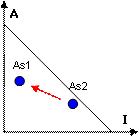Starting developing in .Net Framework 3.0
Here's a how to start developing .Net Framework 3.0 applications.
For any doubts on OS and framework's compatibility, read the article Deploying .Net Framework 3.0.
What's nedded for developing .Net3 applications (taken from here):
- .Net Framework 3 Runtime Components (already ships with WindowsVista and Longhorn)
- Windows SDK: includes the documentation, samples, tools and build environments to develop Windows applications - either native or .NET Framework 3.0.
- [Optional] Visual Studio 2005
- [Optional] "Orcas" .NET Framework 3.0 Development Tools: development tools that work with Visual Studio 2005 and provide functionality such as XAML Intellisense support through schema extensions for the editor, project templates for the Windows Presentation Foundation and Windows Communication Foundation namespaces and .NET Framework 3.0 SDK documentation integration.
- [Optional] Visual Studio 2005 Extensions for Windows Workflow Foundation:extensions to Visual Studio 2005 include project templates, intellisense support for the Workflow namespace (System.Workflow) and integrated documentation.


